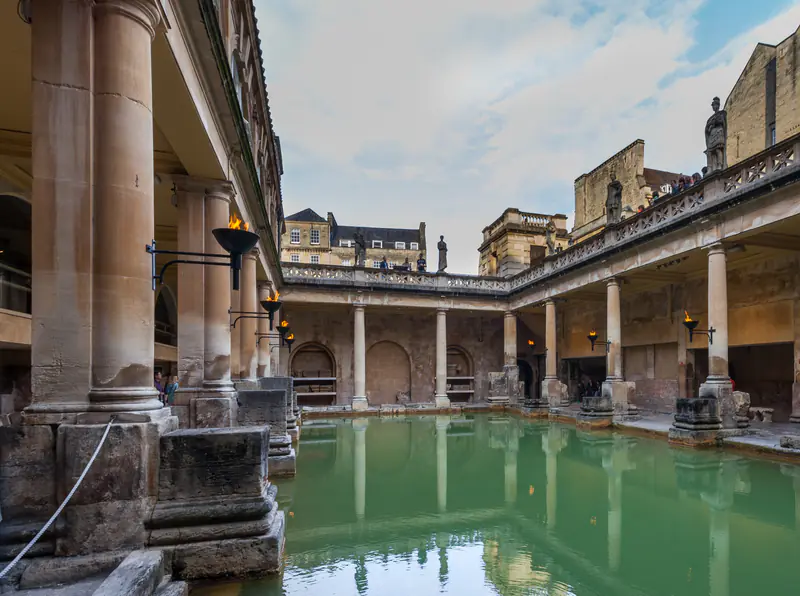UNESCO World Heritage Sites in Germany
Heritage Overview
Germany's UNESCO World Heritage sites represent centuries of European cultural, architectural, and scientific achievement, encompassing medieval towns, industrial innovation, and religious monuments that shaped Western civilisation. The country preserves exceptional examples of Gothic, Renaissance, and Baroque architecture alongside planned cities, engineered landscapes, and sites documenting intellectual movements from the Reformation through the Bauhaus. Architectural heritage demonstrates remarkable diversity, from Romanesque churches and Gothic cathedrals through Renaissance civic buildings to Baroque pilgrimage churches and Bauhaus modernism. Medieval town centres preserve intact fortifications, market squares, and timber-frame houses illustrating urban development across centuries. Palace complexes and gardens showcase aristocratic patronage and landscape design principles. Religious sites include innovative Lutheran churches and Catholic pilgrimage destinations. Industrial heritage documents revolutionary developments in mining, manufacturing, and engineering that powered European industrialisation. Roman fortifications preserve frontier infrastructure of the ancient empire. Cultural landscapes illustrate distinctive regional traditions, viticultural systems, and designed parklands. Together, these sites reflect Germany's contributions to European arts, architecture, philosophy, and technology, from medieval Holy Roman Empire through Reformation, Enlightenment, industrialisation, and modernist movements that fundamentally influenced European cultural development and global architectural practices.
Essential Information
Visa Requirements
Germany is part of the European Union and Schengen Area. EU, EEA, and Swiss citizens can enter freely with valid identification. Visitors from many countries including the United States, Canada, Australia, Japan, and New Zealand can stay up to 90 days within 180 days without visas. From 2026, travellers from visa-exempt countries require ETIAS (European Travel Information and Authorisation System) authorisation before arrival, valid three years at €7. Other nationalities should verify requirements with German embassies. Passports must remain valid for three months beyond intended departure from the Schengen Area. Germany maintains passport controls at borders despite Schengen membership.
Currency
The official currency is the Euro (EUR), adopted in 2002 following the Deutsche Mark. Credit and debit cards (Visa, Mastercard, Maestro, Girocard) are increasingly accepted in hotels, restaurants, and shops, though Germany traditionally preferred cash and some establishments still only accept cash or Girocard. ATMs are widespread in cities and towns, typically without fees for Eurozone cards but charging €2-5 for foreign cards. Cash remains important for smaller shops, markets, bakeries, and rural areas. Contactless payments are growing. Tipping is customary by rounding up or adding 5-10%. Currency exchange available at airports, banks.
Language
The official language is German, spoken throughout the country with regional dialects varying significantly between areas. English proficiency is excellent, particularly amongst younger generations, with over 60% of Germans speaking English. Tourism professionals, hotels, and restaurants in cities typically offer English services. Signage in tourist areas includes English translations. Northern Germany generally has higher English proficiency than rural southern regions. Germany emphasises English education, making communication straightforward for English speakers. Regional languages and dialects like Bavarian, Saxon, and Low German are spoken locally. Learning basic German phrases (Guten Tag for hello, Danke for thank you) is appreciated.
Climate
Germany experiences temperate seasonal climate with four distinct seasons and regional variations. Summers (June-August) are warm with temperatures typically 20-28°C, occasionally reaching 30-35°C during heatwaves. Winters (December-February) are cold with temperatures averaging -2 to 5°C, colder in southern Bavaria and Alpine regions with reliable snow. Spring (April-May) and autumn (September-October) offer mild conditions ideal for heritage tourism, with temperatures ranging 10-18°C and colourful seasonal changes. Southern regions receive more precipitation and snow. Northern coastal areas benefit from maritime influences with milder temperatures. The Rhine and Moselle valleys enjoy microclimates favouring viticulture. Best visiting periods are May-September for pleasant weather.
